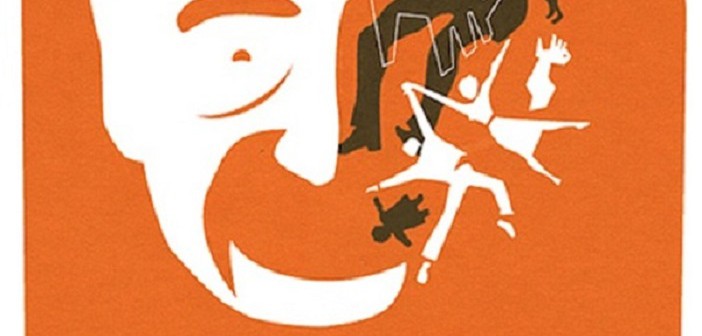If it was good enough for the 1968 premier of CBS’ 60 Minutes, it is good enough for the premier of The Transcendental Dram today. Re-presenting Why Man Creates, by Saul Bass.
But first a few words about the Man who created it, Saul Bass. He was the most famous graphic designer of the 20th Century, creator of enduring logos for all kinds of organizations from the United Way to AT&T. Bass was also a sought-after designer of movie posters. You can see many of them here. In addition, he was a the first to design animated film sequences that introduced many movies beginning with Otto Preminger’sMan With A Golden Arm and ending with Steven Spielberg’s Schindler’s List.
Why Man Creates is an Academy Award-winning animated short documentary film on the nature of creativity. It’s a series of animated sequences, episodes and commentaries on the creative process. It was written by Bass and Mayo Simon, and directed by Bass. It is one of the most highly regarded short films ever made.
The 24-minute film is divided into eight parts, each dedicated to a different aspect of creativity. These are: The Edifice, Fooling Around, The Process, Judgment, A Parable, Digression, The Search, and The Mark.
The Edifice is a totally engaging animated sequence about the history of civilization that begins with early humans hunting and ends with the consequences of industrialization and collapse of civilizations.
As with all human endeavors, the cavemen do not get it right the first time. When they eventually kill their prey, it turns into a cave painting—the first of Bass’s endless surprises. We see the early cavemen discover the lever, wheel, ladders, and fire. The film then cuts to animated clips of early societies, the first religions and the creation of writing.
Soon an army moves across the screen chanting “BRONZE,” but they are overrun by another army chanting “IRON”.
A black screen follows. One man in traditional Greek clothing states, “All was in chaos ’til Euclid arose and made order.” We see Greeks discussing everything from “What is the good life and how do you lead it?” to “What is Happiness?”
In one of my favorite parts, amid the darkness of the Dark Ages, inaudible whisperings and mumblings are heard. A light clicks on and an Arab mathematician says, “Allah be praised! I’ve invented the zero.” “What?” asks his friend, and the Arab responds: “Nothing, nothing.”
Cloistered monks chant, “What is the shape of the Earth? Flat.” “What happens when you get to the edge? You fall off.” Funny stuff.
And on it goes: Michelangelo, Darwin, Louis Pasteur, Beethoven and Alfred Nobel inventing dynamite. Why Man Creates ends with the advances of industrialization, the building of a new edifice, the Wright Brothers landing on top of it, but they are quickly buried by more advanced planes, cars, televisions, and, finally, early computers. At the very top is a radioactive atom which envelops a man in smoke. The Edifice ends with him yelling, “HELP!”
Fooling Around shifts from a comic script to random live action and illustrated sequences and the creative ideas which come from them, such as a walk/don’t walk sign which changes to “jump”, inspiring pedestrians to do jumping jacks in the intersection.
The Process features a man making artwork from a series of geometrical figures. Each time he attempts to keep them in place, they rearrange themselves. He tries many different approaches to the problem. Finally he accepts a working configuration and calls his wife to look at it. She says, “All it needs is an American flag.”
Judgment is a series of man-in-the-street reactions to the creation from The Process. One says, “It represents the decline of Western culture…”, reflecting a view of much art in the ’60s that is still prevalent today.
A Parable is a beautifully invented sequence of the life of a ping-pong ball that is rejected because it doesn’t bounce high enough for quality control. I will not spoil the surprise ending. Skip to this sequence if you are in a hurry. It’s worth it.
In Digression, a very short section, one snail says to another, “Have you ever thought that radical ideas threaten institutions, then become institutions, and in turn reject radical ideas which threaten institutions?” The other snail replies, “No.” The first snail reacts, dejected: “Gee, for a minute I thought I had something.”
The Search depicts scientists who have been working for years on such projects as solving world hunger (James F. Bonner), developing a cure for cancer (Renato Dulbecco), or questioning the origin of the universe (Jesse Greenstein). We then see a scientist who has worked on a project for 20 years THAT simply didn’t work out. When asked what he will do next with himself, he doesn’t know. (Note: Why Man Creates was made in the late ’60s and still none of these scientific problems have been solved, despite continuous research and efforts by multiple governments.)
Finally, in The Mark, the title question is asked: Why Does Man Create? The answer is painted on the side of a building.
The entire 24 minute film can be seen here.




